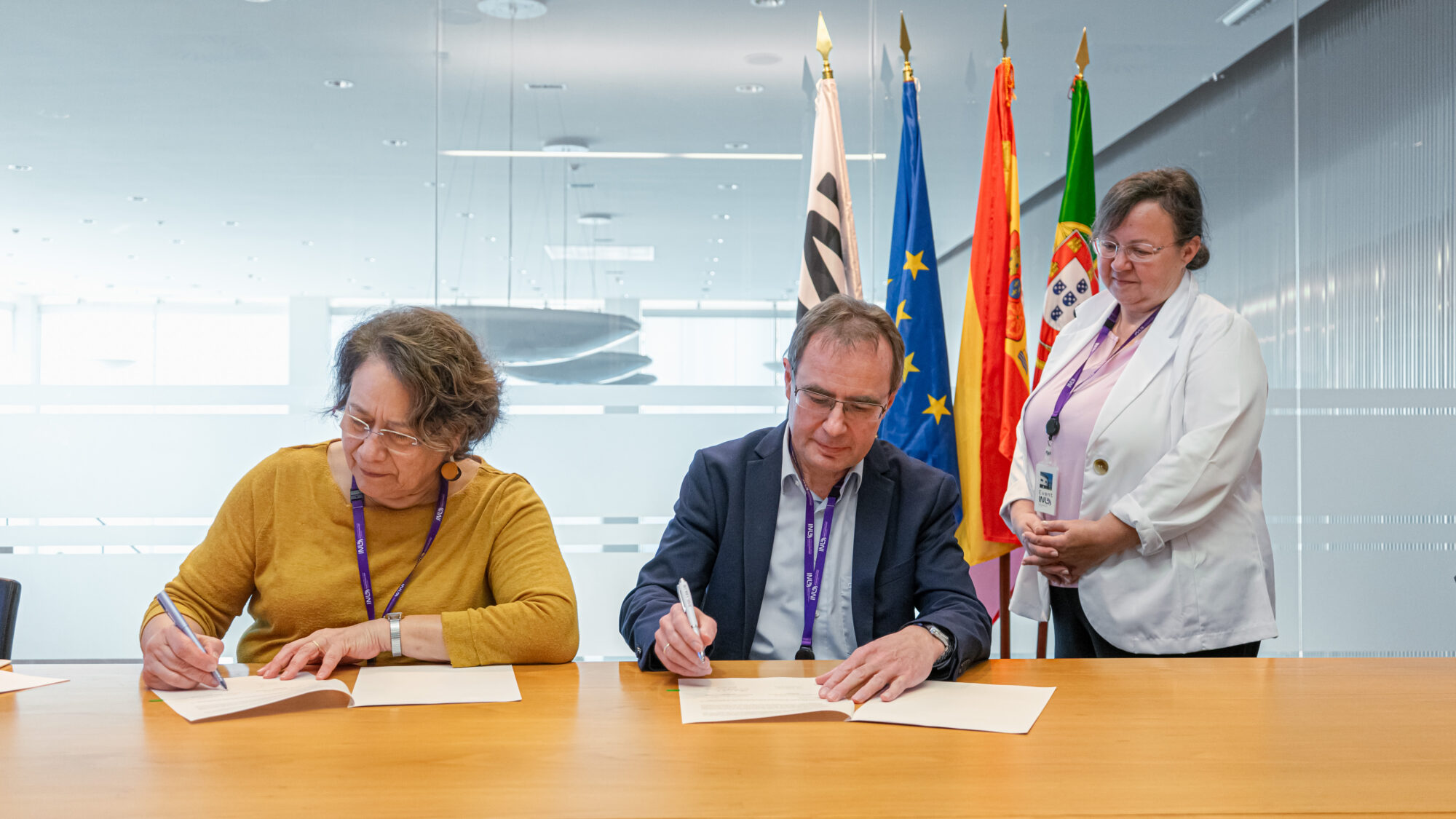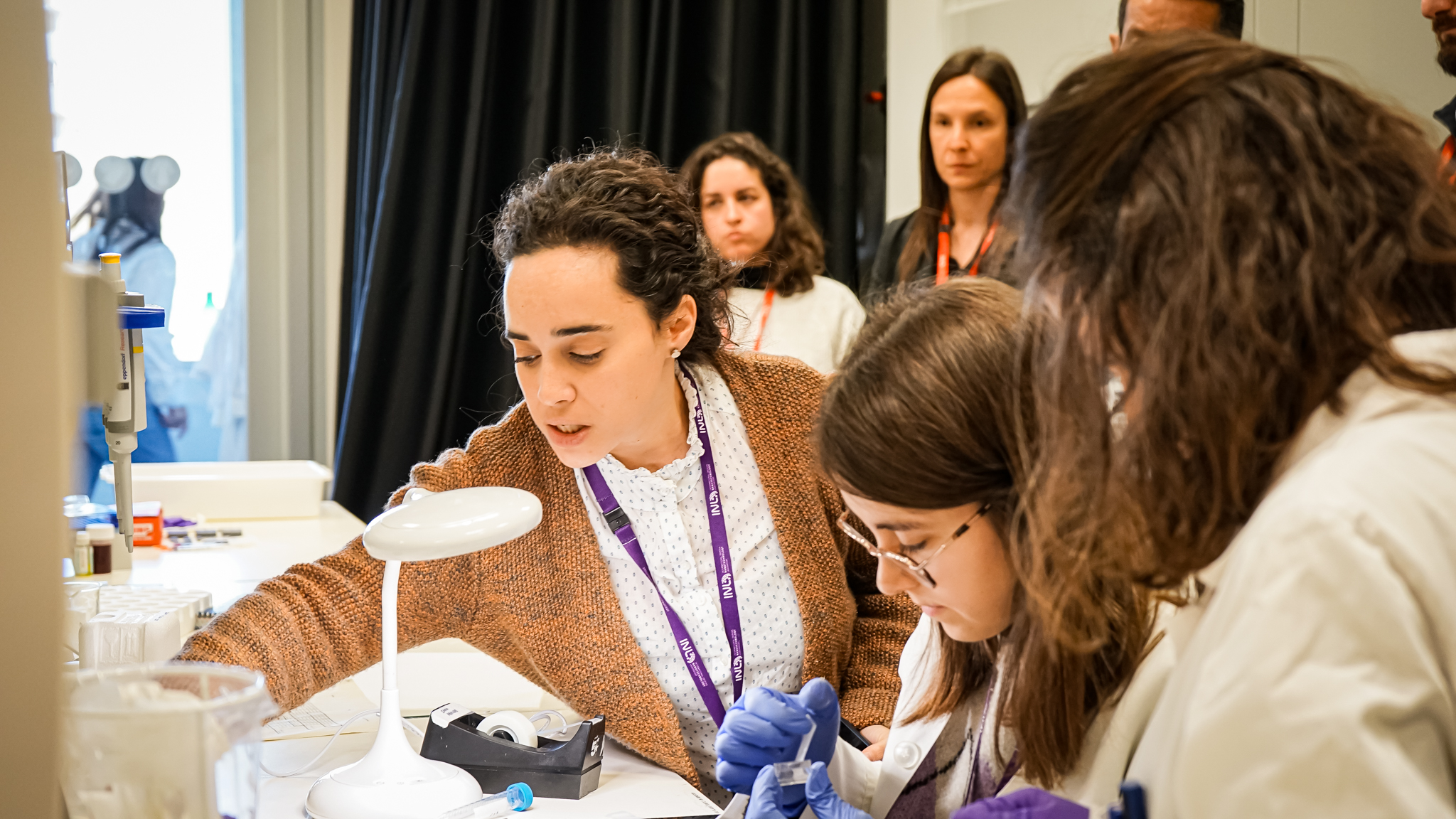
Quantum dots: the nanoparticles behind the Nobel Prize in Chemistry 2023
October 10, 2023
As the Nobel Prize in Chemistry 2023 was attributed to Moungi G. Bawendi, Louis E. Brus, and Alexei I. Ekimov, INL acknowledges some of the work done by research groups using quantum dots: the chemical particles discovered and synthetized by these scientists.
Quantum dots are nanoparticles with semiconducting properties. This means that their size directly influences their capacity to absorb and emit light in a range of specific colours. These particles are so small that their structure is largely governed by the laws of quantum mechanics. We can explain their functionality with a metaphor: the electron wave gets confined inside a ‘box’, i.e., inside the tiny particle, affecting its optical properties. So, regardless of being chemically identical, large quantum dots emit red light while the small ones emit blue.
Independently, Ekimov and Brus were able to demonstrate and understand the size-dependent quantum effects in particles. Later on, Bawendi came up with the effective synthesis of quantum dots with well-defined size and with high optical quality. Synthetising quantum dots with different sizes and shapes is very important, since their applications vary according to their multiplicity. From medical imaging to everyday uses, like TVs with Qled screens, there’s ground for researching immense possibilities.
INL has several projects and research groups that work with quantum dots. For example, the Theory of Quantum Nanostructures Group (TQN), in collaboration with experimental ones in Switzerland, can be counted as addressing a relatively novel kind of quantum dots, namely nanographenes: molecules composed of tens of carbon atoms that display intriguing properties, including quantum magnetism. Yury V. Kolen’ko, Group Leader of the Nanochemistry Research Group, has been working with Lead selenide and Lead telluride quantum dots, which are compounds that can be used for thermoelectric applications Also, projects like PHOQUSING and QU-BOSS[MD4] (integrated in the Quantum and Linear Optical Computation Group), use quantum dots to generate single photons. These are used in complex multimode interferometers to demonstrate small scale photonic quantum computation and other applications.
What is at stake is the relevance of bridging new discoveries with a cumulative process of questioning. INL is at the forefront of these fields, providing researchers and society with a framework that enhances curiosity and innovation. Groups like TQN and projects such as PHOQUSING and QU-BOSS position the Laboratory and move us towards newness. Remembering the importance of transdisciplinary approaches, the Nobel Prize in Chemistry 2023 enhances the nanoscience’s contribution to society.
Photo by: Enrique Carbo-Argibay


